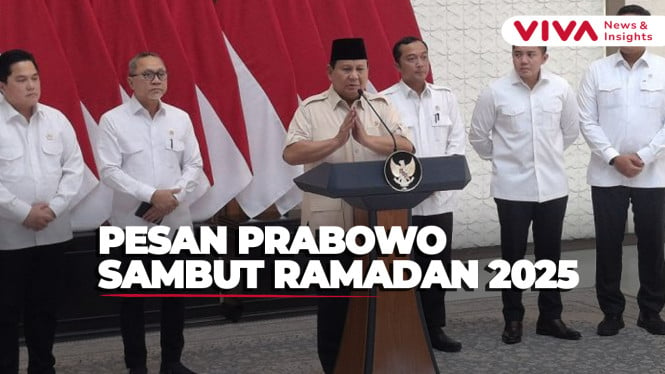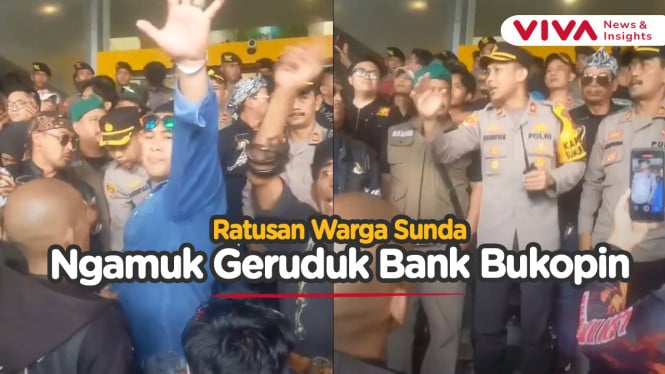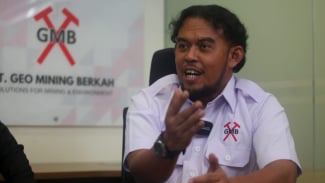Five Oldest Traditional Markets in Indonesia
- U-Report
VIVA – The traditional market is one of the central sources of the people’s economy. Actually, markets in Indonesia are divided into two types, namely traditional markets, and modern markets.
Both have almost the same function, only the purchase transaction differs. In traditional markets, buyers can interact by bargaining with sellers. While the modern market is not.
Then, according to the 2020 Market and Trade Center Directory report, there are 16,235 traditional markets spread throughout Indonesia. It turns out that Indonesia has the oldest markets that are hundreds of years old, as follows.
1. Jukung Market or Terapung Market, South Kalimantan (1526)
Pasar terapung.
- U-Report
The existence of the Terapung Market cannot be separated from the establishment of the Banjar Kingdom around the middle of the 16th century. At that time, the management of this river port was handed over to Patih Masih and Patih Kuin.
The two 'rulers' who are believed by Syarif and some of the Kuin people are descendants of the marriage between the Malay tribes who live on the banks of the river with the Dayak tribe, especially from the Ngaju sub-ethnic.
The factor that supported the existence of a floating market at that time was the availability of logs as raw materials for making "jukung" or boats without engines. The types of wood that are often used as "jukung" materials are ironwood and meranti wood.
In its development, the Terapung market was used as a tourist destination by the South Kalimantan Provincial Government.
Pasar Senen
- vivanews/Andry Daud
The existence of Senen Market began in August 1733, a landlord and architect named Yustinus Vinck bought land from Mr. Johan Francois de Witte van Schouten. After obtaining a permit, in the eastern part of Weltevreden, near Croten Zuidenberg, Senen Market was built.
Snees Market or now better known as Senen Market is the oldest market in Jakarta. Named Senen Market because the traders in this market originally took place every Monday and were dominated by ethnic Chinese. Along the way, the name of this market changed to Vinck passer (referring to the owner and architect Yustinus Vinck).
3. Tanah Abang Market, Jakarta (1735)
Ilustrasi Pasar Tanah Abang
- VIVA/M Ali Wafa
The name Tanah Abang was born from the story of the siege of the Mataram Kingdom army in 1628 to the City of Batavia. At that time, the Mataram army invaded the City of Batavia from all directions and used Tanah Abang as a base, because at that time Tanah Abang was a hilly land and there were many swamps around it.
Because of the red soil or "Abang" in Javanese, the name Tanah Abang which means Tanah Merah was born. On August 30, 1735, a very rich Dutchman, Justinus Vinck, received permission from the Governor General Abraham Patram to build two markets: Tanah Abang Market and Senen Market.
Previously, Tanah Abang Market was called Weltervreden Market, with the market day being Saturday.
4. Bringharjo Market, Yogyakarta (1758)
Pasar Bringharjo Yogyakarta
- U-Report
The Beringharjo Market area was originally a banyan forest. Shortly after the establishment of Kraton Ngayogyakarta Hadiningrat. In 1758, this market area was used as a place for economic transactions by residents of Yogyakarta and its surroundings.
In 1925, the place of this economic transaction had a permanent building. The name 'Beringharjo' given by Hamengku Buwono IX means the area which was originally a banyan tree (bering) is expected to provide prosperity (harjo).
5. Baru Market, Jakarta (1820)
Pasar Baru / Passer Baroe 1820
- vivanews/Andry Daud
Baru Market was known as Passer Baroe. This market has been around since 1820, and is one of the oldest development centers in Jakarta. It is called the Baru market because this market is relatively new.
The Baru Market was built to complement the two previous big markets, namely Senen Market and Tanah Abang market. Both were built in the 1730s. Due to the development of the community, Baru Market was used as a shopping area. The Chinese people started to set up shops in 1877.
Over time the existence of the store is mushrooming. The right and left sides of Baru Market began to be filled with traders, especially after the Dutch East Indies government disbursed large development funds.





































